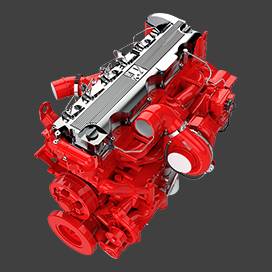Nov . 09, 2024 17:51 Back to list
How to Properly Adjust Brake Drums for Optimal Vehicle Safety and Performance
Adjusting Brake Drums A Comprehensive Guide
Braking systems are essential components of any vehicle, ensuring safety and control. Among the various types of braking systems, drum brakes are still prevalent, particularly in older models and some trucks. Understanding how to adjust brake drums is vital for maintaining optimal performance and safety. This article provides a comprehensive guide to adjusting brake drums, ensuring your vehicle remains safe on the road.
Understanding Brake Drums
Brake drums work on the principle of friction. When the brake pedal is pressed, brake shoes are pushed against the inside of the drum, creating friction that slows down or stops the vehicle. Over time, as the brake shoes wear down, the distance between the shoes and the drum increases, leading to decreased braking efficiency. Regular adjustments can mitigate this issue, promoting better performance and extending the life of your braking system.
Signs That You Need to Adjust Brake Drums
Before delving into the adjustment process, it’s essential to recognize when intervention is necessary. Key indicators include
1. Reduced Braking Power If the vehicle takes longer to stop, it might signal that the brake drums need adjustment. 2. Unusual Noises Grinding or scraping sounds can indicate that brake shoes are excessively worn and require adjustment.
3. Brake Pedal Feel If the pedal feels spongy or goes down farther than usual before engaging, it may be time to check and adjust the brakes.
4. Pulling If the vehicle pulls to one side while braking, it can indicate uneven wear in the brake components.
Tools Required
Before you start the adjustment process, gather the following tools
- A jack and jack stands - A lug wrench - A brake adjustment tool or screwdriver - A car creeper (optional but recommended for comfort) - Gloves and safety goggles
adjusting brake drums

Step-by-Step Guide to Adjusting Brake Drums
1. Safety First Always work in a well-ventilated area, and wear gloves and safety goggles to protect yourself.
2. Lift the Vehicle Use the jack to lift the vehicle off the ground. Make sure to securely place jack stands underneath to ensure stability during the adjustment.
3. Remove the Wheel Use a lug wrench to remove the wheel, exposing the brake drum.
4. Inspect the Brake Components Before adjusting, inspect the brake shoes, springs, and drum for any signs of wear or damage. If these parts are excessively worn, consider replacing them before adjustment.
5. Locate the Adjuster Look inside the brake drum for the adjuster mechanism, which is typically a star wheel or a threaded rod. This is the component that will allow you to tighten or loosen the distance between the shoes and the drum.
6. Adjust the Brake Shoes Using your brake adjustment tool or screwdriver, turn the adjuster to expand the brake shoes until they just begin to contact the drum. You may hear a faint rubbing sound when you rotate the drum by hand. This indicates that the shoes are correctly adjusted.
7. Test the Adjustments After making adjustments, manually rotate the brake drum to ensure that it spins freely without binding. If it feels too tight, back off the adjustment slightly.
8. Reassemble Once satisfied with the adjustments, replace the wheel and secure it with the lug nuts. Lower the vehicle carefully and repeat the process on the opposite side if necessary.
9. Test Drive Finally, take the vehicle for a test drive in a safe area to ensure that the brakes function properly and that there are no unusual noises. This will confirm that the adjustment was successful.
Conclusion
Adjusting brake drums is a crucial skill for any vehicle owner, especially those maintaining older models or specific types of trucks. Regular adjustments not only enhance safety but also prolong the life of your braking system. By following the outlined steps and ensuring that necessary checks are performed, you can keep your vehicle in optimal condition. Remember, if you feel unsure about any step of the process, it’s always wise to consult a professional mechanic. Your safety on the road is paramount, and well-maintained brake systems are a critical part of that safety.
-
Scania Brake Drums: OEM Quality for Optimal Safety & Durability
NewsAug.16,2025
-
R.V.I: Advanced Remote Visual Inspection for Precision
NewsAug.15,2025
-
Discover HYUNDA: Innovative Vehicles, Equipment & Solutions
NewsAug.14,2025
-
R.V.I: Unlock Advanced Insights & Real-time Performance
NewsAug.13,2025
-
Kamaz Brake Drum: Durable & Reliable for Heavy Duty Trucks
NewsAug.12,2025
-
Heavy Duty Iveco Brake Drum - Premium Quality & Safety
NewsAug.11,2025
